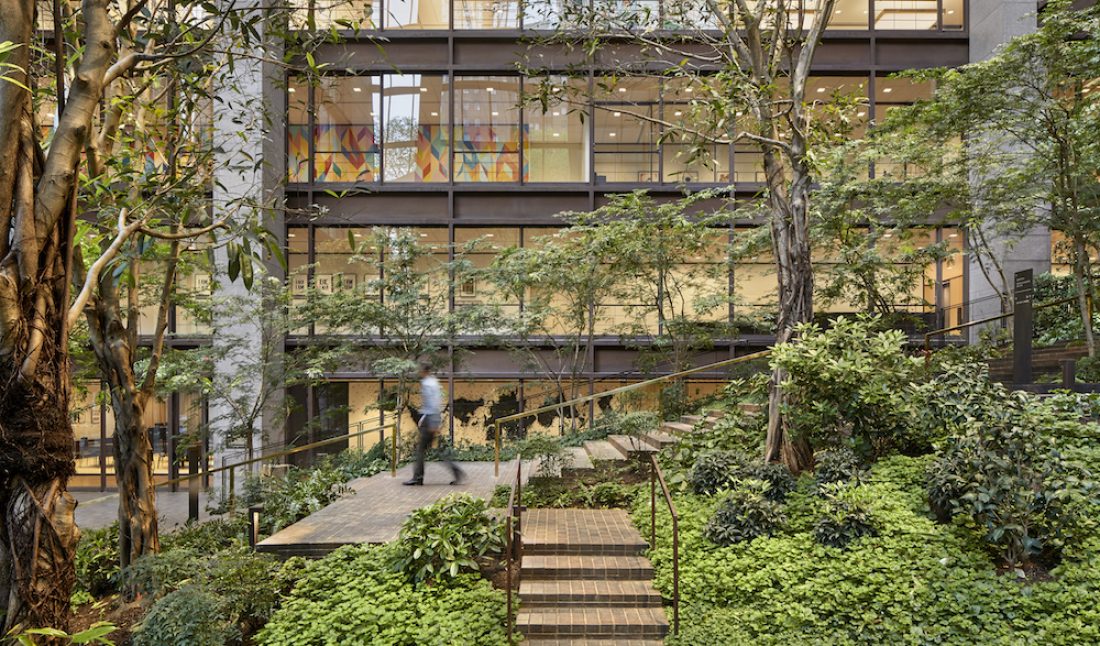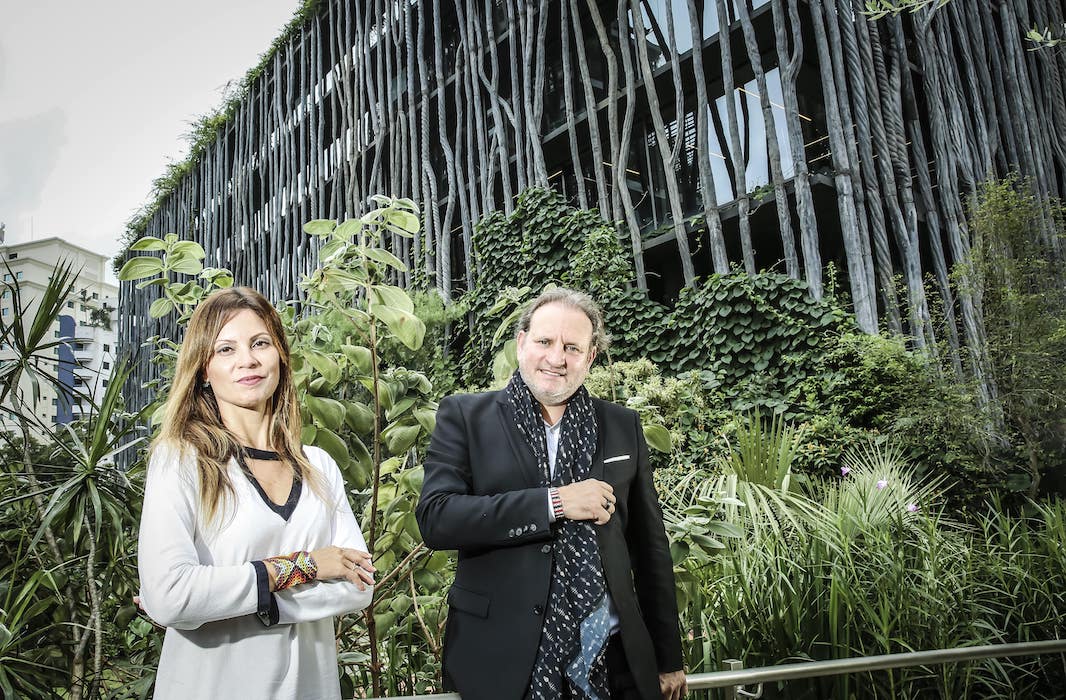Lance Hosey is an architect, designer, and sustainability expert with nearly three decades of experience. Today at the global design and architecture firm Gensler, he’s a design director and a co-leader of its Design Resilience sector—the firm’s sustainability initiatives department. As he finds ways to improve on design, Hosey is creating spaces that are more socially, economically, and environmentally responsive and responsible. Essentially, he’s putting people’s needs first, but he’s getting Gensler to get greener, too.
Last September, the firm established the Gensler Cities Climate Challenge (GC3)—a pledge to eliminate all greenhouse gases associated with the built environment—and joined governments and private corporations in signing the Paris Pledge for Action agreement. The firm aims to significantly reduce carbon emissions across all it platforms and reduce the overall global energy demand.
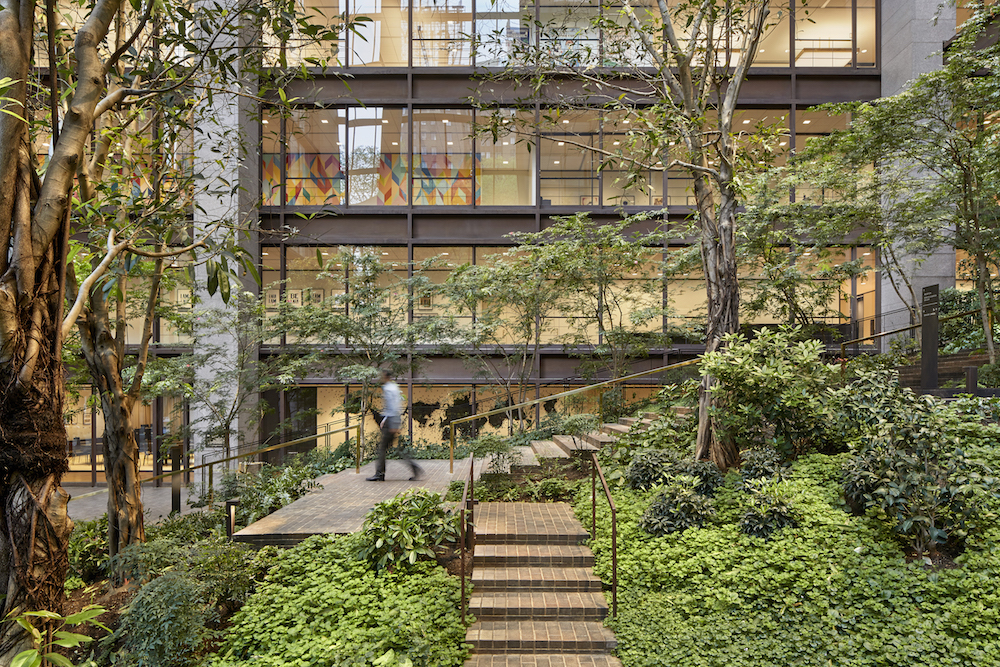 Ford Foundation in New York City; © Garrett Rowland, courtesy of Gensler.
Ford Foundation in New York City; © Garrett Rowland, courtesy of Gensler.
Whitewall spoke with Hosey to hear more about Gensler’s sustainable design, what it means to be a “smart” city, and how the global COVID-19 pandemic is pushing for new solutions to new challenges.
WHITEWALL: Gensler has an intricate approach to sustainability. Can you explain what the company is doing to further more sustainable projects?
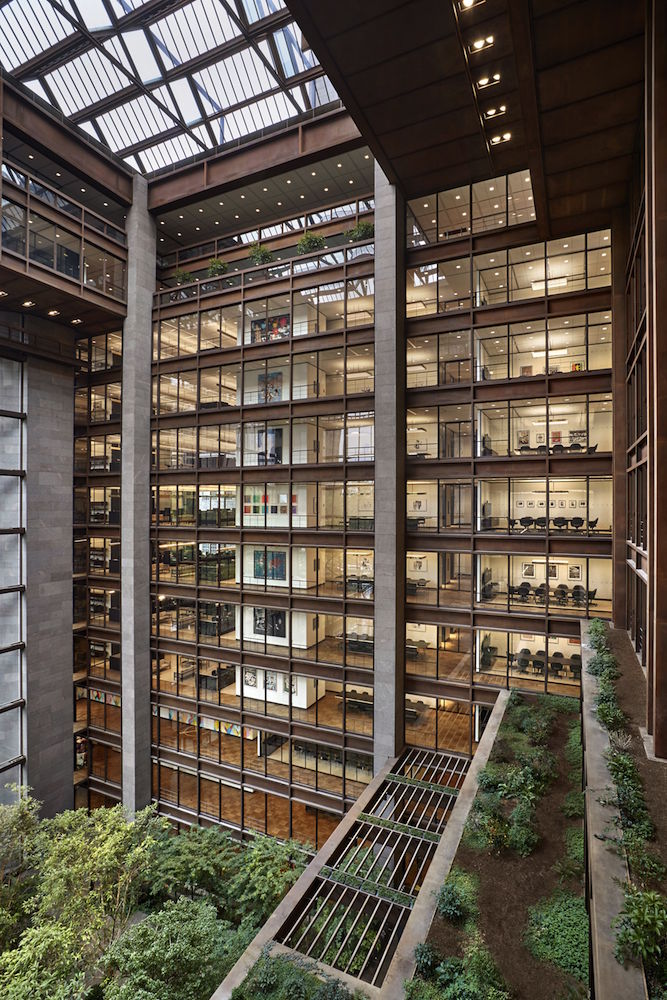 Ford Foundation in New York City; © Garrett Rowland, courtesy of Gensler.
Ford Foundation in New York City; © Garrett Rowland, courtesy of Gensler.
LANCE HOSEY: At Gensler, sustainability initiatives fall under our Design Resilience umbrella, which we define as adapting to and preparing for a changing world. Gensler’s mission is to leverage the power of design to create a better world, so we see Design Resilience as a key strategy to achieve that. For example, we’ve been tracking energy performance in our growing portfolio for nearly a decade. In 2019, we designed more than 1.5 billion square feet of space to prevent 16 million metric tons from entering the atmosphere annually—the equivalent of eliminating the emissions of nearly two million homes.
We also announced the Gensler Cities Climate Challenge (GC3), which is our initiative to achieve carbon neutrality in both the operations and embodied energy of all our work within a decade. The cumulative impact of this effort could result in the elimination of billions of metric tons of CO2.
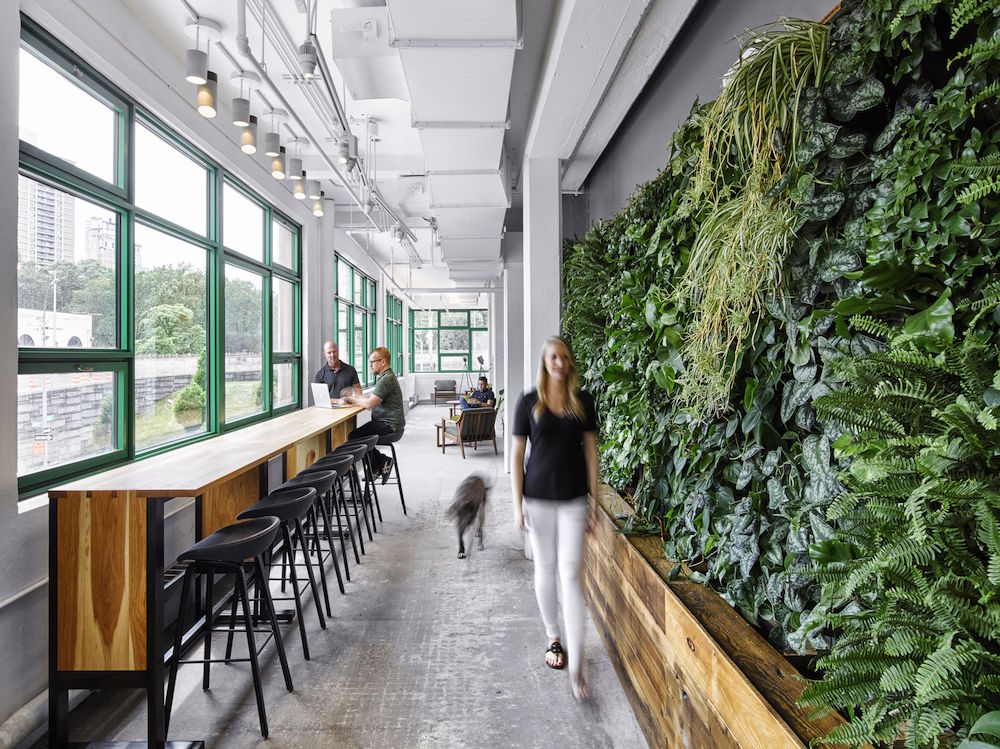 Etsy Headquarters in New York City; © Garrett Rowland, courtesy of Gensler.
Etsy Headquarters in New York City; © Garrett Rowland, courtesy of Gensler.
WW: Gensler is taking on global challenges and designing for the needs of people. How do you determine what that is, and how do you deliver it?
LH: As a firm, our focus is on improving the human experience as we work to shape the future of cities. By 2050, more than 70 percent of the earth’s population will live in cities. We are seeing our design practice focus on how to make cities more livable, while ensuring the safety and well-being of people.
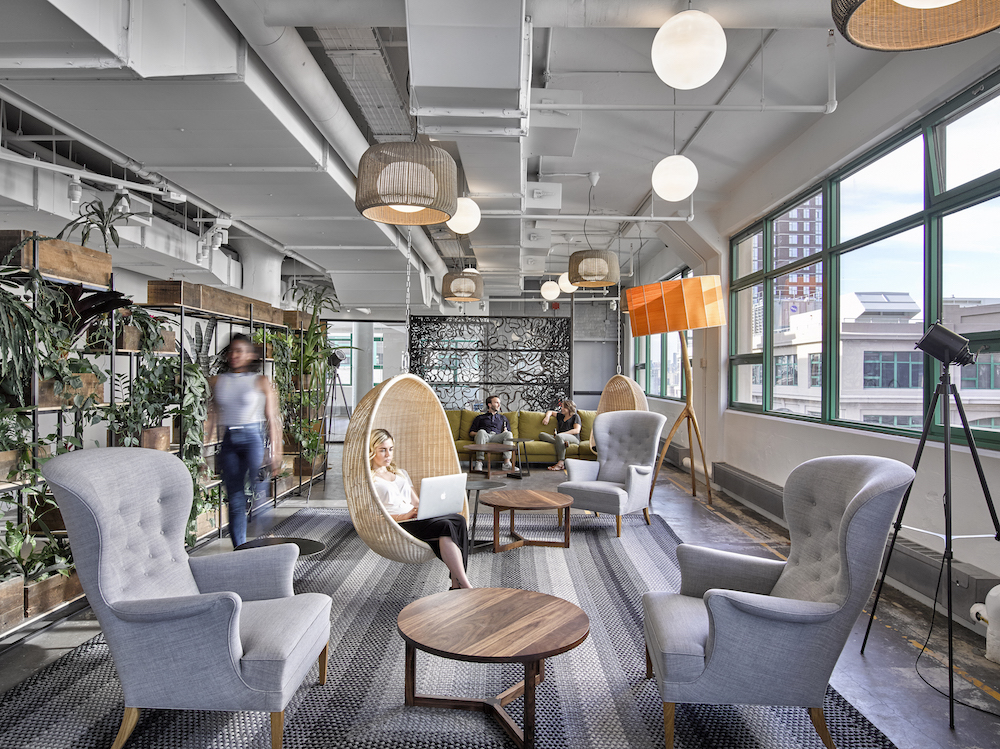 Etsy Headquarters in New York City; © Garrett Rowland, courtesy of Gensler.
Etsy Headquarters in New York City; © Garrett Rowland, courtesy of Gensler.
The Gensler Cities Climate Challenge (GC3) is a perfect example of the scale of our impact, but we also have a variety of programs, projects, and research addressing other global challenges such as mobility, urban density, housing, and homelessness. With the COVID-19 crisis at hand, we are also rethinking our work in terms of global wellness, which co-authored a blog post on earlier this spring entitled “Redefining Wellness in the Face of Pandemic.”
WW: Gensler creates spaces—like airports, apartment buildings, offices, and retail spaces—that center around work, lifestyle, and community. What do you think it means to be a “smart” city?
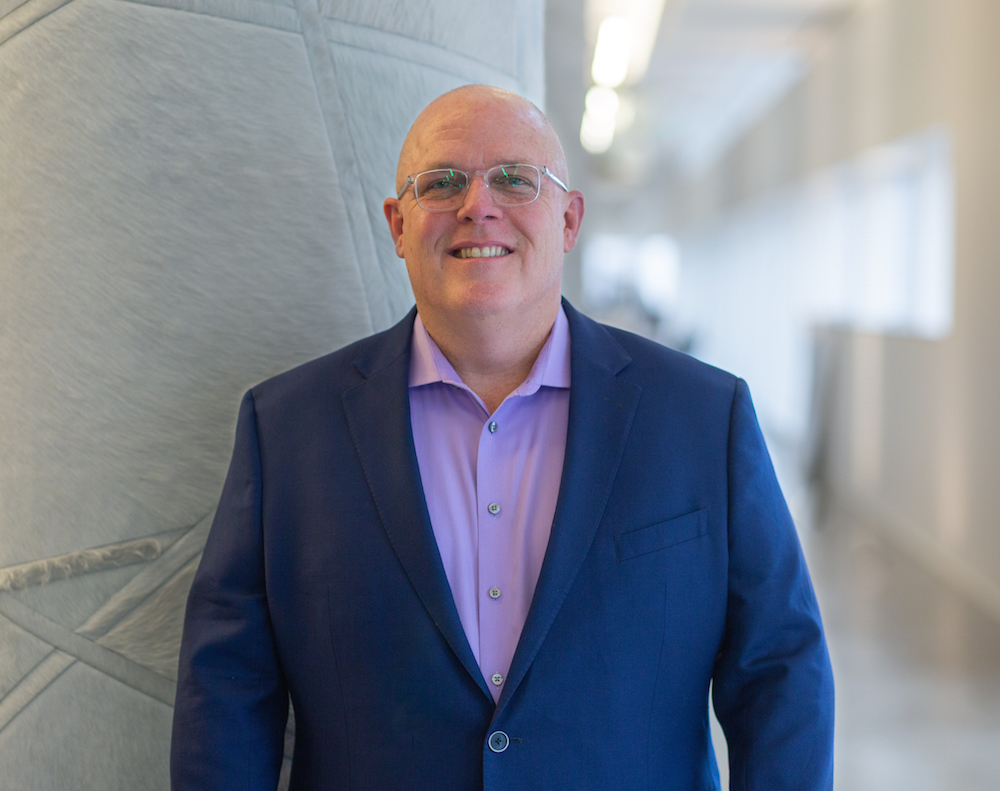 Courtesy of Lance Hosey.
Courtesy of Lance Hosey.
LH: As architects, designers, and urban planners, we have a responsibility to build cities that put people’s needs first. Studies show that up to 90 percent of the impact of the built environment is determined by the most basic design decisions. Usually, a “smart city” is defined around technology—specifically, information and communication infrastructure improving functional efficiency. This kind of interconnectivity is essential as cities grow and become more complex, but we also should think of a “smart city” as one that is designed intelligently.
An urban plan can encourage social interaction, human experience, and sustainable performance through density, diverse uses, scale, block length, street widths, solar orientation, et cetera—in other words, the basic shape of cities. In designing spaces outfitted with smart city technologies, Gensler starts by engaging clients by asking what human needs this technology will fulfill and how users will engage with it. A human-centered smart city philosophy could make an even greater impact at the individual building and development scale.
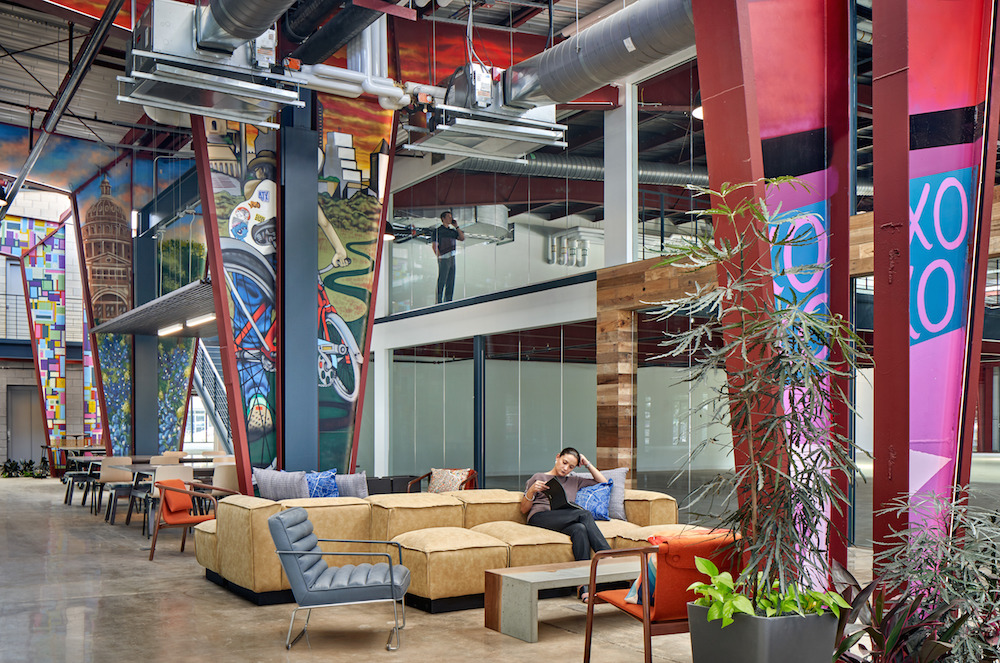 UPCycle in Austin, Texas; © Dror Baldinger, courtesy of Gensler.
UPCycle in Austin, Texas; © Dror Baldinger, courtesy of Gensler.
WW: Urban areas contribute more than 80 percent of global gross domestic product (GDP), but they’re also responsible for 70 percent of global carbon emissions. How does Gensler approach this?
LH: Yes, cities account for the majority of emissions, but consider that ratio. Eighty percent of production with 70 percent of emissions sounds efficient compared to non-cities, which create 20 percent of production with 30 percent of emissions. When you do the math, cities are 48 percent more efficient with production. But this only looks at the average for urban areas.
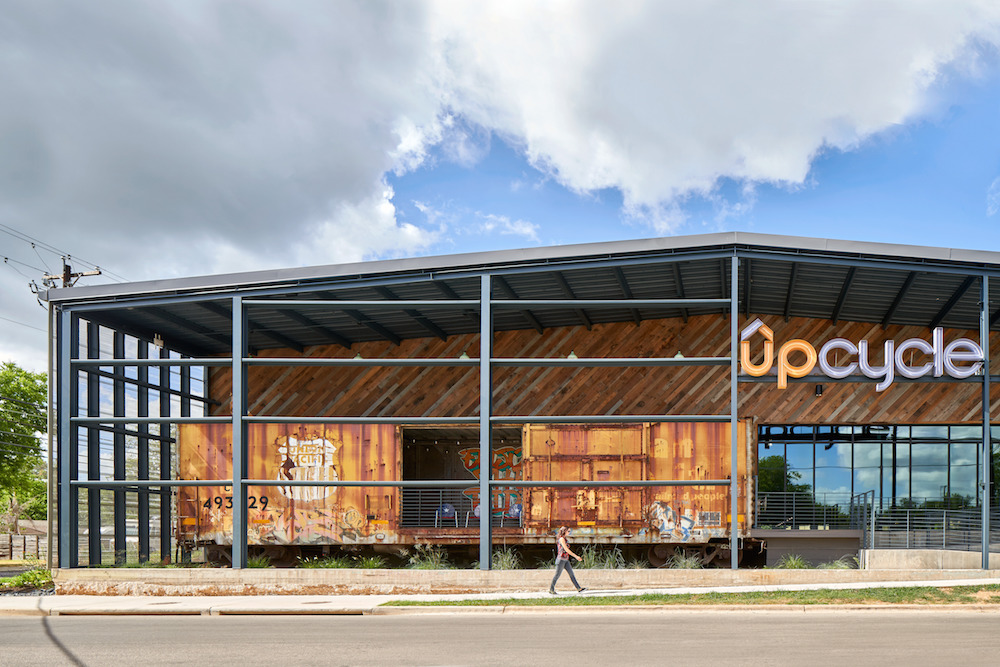 UPCycle in Austin, Texas; © Dror Baldinger, courtesy of Gensler.
UPCycle in Austin, Texas; © Dror Baldinger, courtesy of Gensler.
Denser cities often are far more efficient with resources than communities with greater sprawl. For example, some studies show that Manhattan has the lowest carbon footprint per capita in the country—over 80 percent of New Yorkers commute by public transit, bicycle, or foot. By 2050, more than 70 percent of the earth’s population will live in cities, so ensuring they are well designed is critical, along with an even greater emphasis on health and wellness in cities.
WW: What do you think the future of sustainable design looks like?
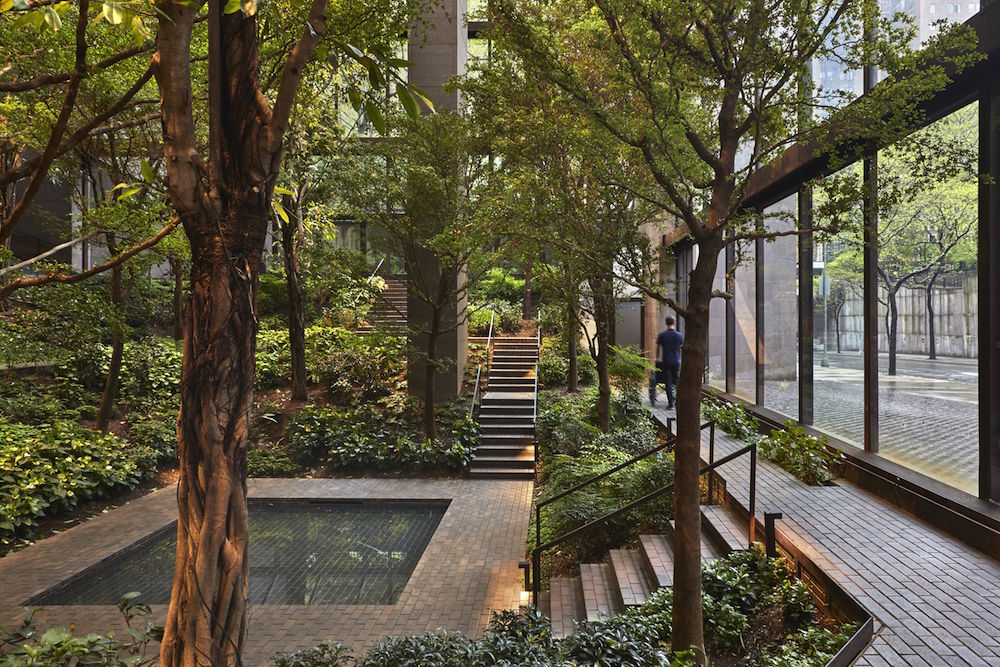 Ford Foundation in New York City; © Garrett Rowland, courtesy of Gensler.
Ford Foundation in New York City; © Garrett Rowland, courtesy of Gensler.
LH: Ideally, the concept of “sustainable design” will get replaced by just “design.” My book The Shape of Green: Aesthetics, Ecology, and Design outlines a set of principles to bridge the divide between “good design” and “green design” and gives many examples about how to integrate image and impact, form and performance. How something looks and how it works should be one and the same. If every designer embraced this idea, all design could both look good and be good for you.
WW: As we write this, we’re isolated due to COVID-19. What has been your biggest takeaway from this pandemic?
LH: Every industry has been affected to some degree, but we are continuing to support clients who are quickly adapting to this new reality. The nature of commerce is social exchange, and this will never change. The quarantine has shown how much people crave connection and fulfilling experiences, which are at the core of our work as designers.
WW: How has this global health crisis changed the way you view your business or your industry at large?
LH: At Gensler, we’ve learned just how agile we can be. Virtually overnight, we transitioned from 50 corporate offices to over 5,000 home offices and maintained productivity. More generally, I’ve been reading about why viruses are becoming more common, and two of the key reasons are urbanization and connectivity—more people living close to one another and being more connected across the world. Overall, this is a positive trend since dense, mixed-used, walkable communities have been shown to improve lives and economies. One important lesson coming out of the crisis is the need for new solutions to new challenges without compromising beneficial conditions. In other words, don’t throw the baby out with the bathwater.






